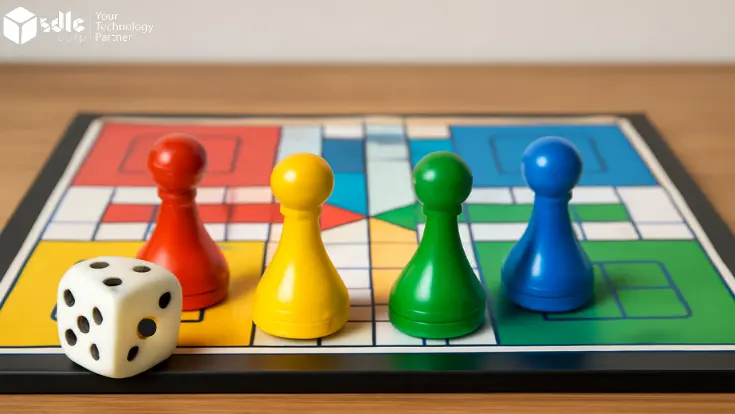Introduction
Ludo has transitioned from a traditional board game into an engaging online multiplayer experience. With the surge in demand for real-time Ludo gaming apps, developers are integrating multiplayer functionalities to enhance user engagement. If you plan to create a multiplayer Ludo game, this guide will walk you through the essential steps, technologies, and best practices.

1. Understanding the Core Multiplayer Game Mechanics
Before diving into the development, it’s crucial to outline the fundamental multiplayer mechanics:
- Turn-based system: Ludo is a turn-based game where players roll dice sequentially.
- Real-time synchronization: Ensure real-time gameplay where every player sees updated moves instantly.
- Lobby creation & matchmaking: Implement features like random matchmaking and private rooms.
- Reconnection & latency handling: Players should seamlessly reconnect if they lose internet connectivity.
2. Choosing the Right Technology Stack
To build a scalable and responsive multiplayer Ludo game, selecting the right technologies is crucial:
- Game Engine: Unity, Unreal Engine, or HTML5 with Phaser.
- Backend Development: Node.js with Socket.IO for real-time interactions.
- Database Management: Firebase, PostgreSQL, or MongoDB.
- Server Hosting: AWS, Google Cloud, or DigitalOcean for low-latency performance.
- Security Measures: SSL encryption and fraud detection mechanisms for secure transactions.
How to Create a Winning Ludo Game Roadmap: From Concept to Launch
3. Developing the Game Architecture
A multiplayer game server is the backbone of a real-time Ludo experience. The architecture should include:
- Game logic server: Handles dice rolling, turn-based movements, and game state.
- Multiplayer communication: WebSockets or TCP protocols for instant data transfer.
- Session management: Manages active games, reconnects players, and handles disconnections.
4. Implementing Key Multiplayer Features

To make the Ludo game engaging, you must integrate
- Real-time communication, which involves Smooth data transfer between players.
2. Chat & Emojis: Interactive chat features enhance user engagement.
3. Customizable Themes & Avatars: Players can personalize boards and tokens.
4. Cross-Platform Compatibility: Support Android, iOS, and web versions.
5. In-game monetization: Ad integration, in-app purchases, and premium game modes.
Optimize your gaming business with our custom Ludo game development services in 2025.
5. Testing & Launching the Multiplayer Ludo Game
After development, extensive testing is required:
- Load Testing: Ensure servers handle high traffic efficiently.
- Bug Fixing & Optimization: Identify and resolve glitches.
- Beta Testing: Launch the game in a controlled environment before full deployment.
Final Thoughts
Building a multiplayer Ludo game requires expertise in real-time gaming technologies, seamless networking, and engaging UI/UX design. If you want a ready-to-launch Ludo multiplayer solution, explore our custom Ludo game development services in 2025 at SDLC Corp.















